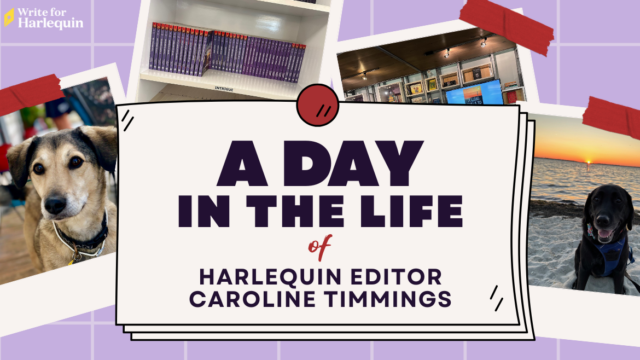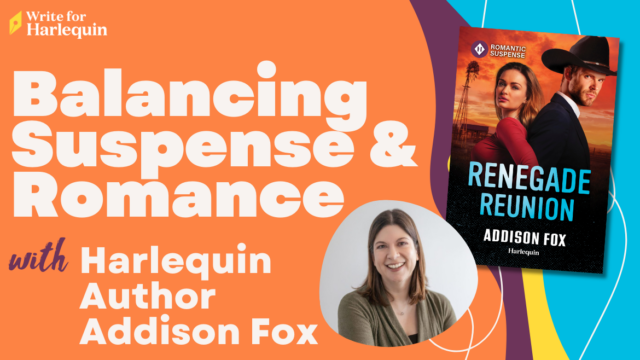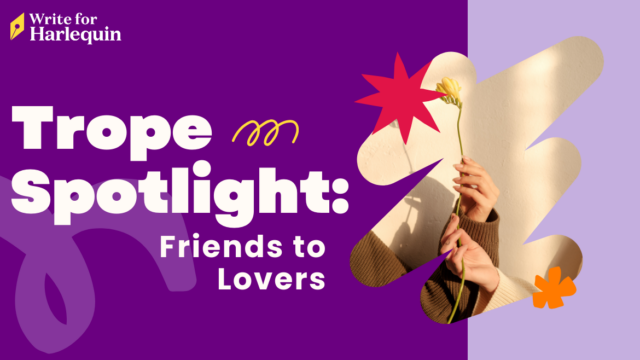We do believe we have the best editors anywhere–and looking around we’ve certainly had a lot of top editors in the publishing business come through Harlequin’s offices in all locations! One of the things we do to develop our skills is to read books on writing so we’re able to help an author craft the strongest possible story. Over the past decade we’ve read one or two a year and the discussions have been lively and involved and varying degrees of successful. Want to know more? Well, Harlequin Desire Editor Charles Griemsman is the relevance leader this year in the NY office, and he’s got the scoop for you!
Editors Never Stop Learning…
Around here, we like to keep abreast of useful resources that will help aspiring romance writers hone their craft and navigate the marketplace.
This year, as SYTYCW heated up, Harlequin editors in the New York office decided it was time to take a second look at a romance writing guide penned by one of our own—Leslie Wainger’s Writing a Romance Novel for Dummies. Leslie’s a bit of an editing legend—she’s worked with NYT bestselling authors such as Linda Howard (who wrote the book’s foreword), Heather Graham and a zillion other big names in the business.
Mind you, the book was published in 2004, so certain aspects of romance publishing have changed—for example, social media promotion was a blip on the horizon and self-publishing was still a pretty difficult proposition. But overall, we were bowled over by how spot on and detailed the recommendations are for actually writing a romance. We particularly liked how Leslie serves up a no-nonsense vocabulary for discussing the various components of the story. Plus, the book is couched in Leslie’s humorous, whip-smart voice, so it’s a pretty quick read.
Here are our top ten takeaways from Leslie’s book:
1. Satisfying reader expectations: As writers and editors, it’s important for us to remember that the readers are the ones setting the agenda in this business. Making sure your novel has what readers expect from the genre is pretty crucial, no? We aren’t writing and editing in a vacuum. Leslie’s book really lays out the basics of reader expectations in a way that isn’t too rules-y. We liked how she’s not being a do-this, don’t-do-that dictator. For example, if it’s a genre romance, readers expect a HEA—no ifs, ands or buts about it. Then again, Leslie goes on to explain that her definition of HEA is somewhat flexible—not necessarily a walk down the aisle by the last page. And in this day and age when the Internet has vastly facilitated reader interactions, it’s become even more crucial to make sure their expectations are being met.
2. Stories with character: Leslie’s book really emphasizes that romances are all about the characters—namely, the hero and heroine—for a lot of people. Mind-blowing plots can be fine, but are they diverting attention from the central romance? Again, the all-important litmus test comes into play: are reader expectations being met?
3. Love scenes aren’t just about sex: Maybe this seems obvious, but Leslie makes a sometimes overlooked point here. The love scenes in a romance shouldn’t just be about anatomies and acrobatics. They are the moments when hero and heroine can connect emotionally on the most intimate of levels, rocketing the romance to new heights or really bringing conflicts into stark relief. Or as one of our editors put it: “It’s not just the meat, it’s the emotion.”
4. Full frontal: No, this isn’t another takeaway about the love scenes. It’s about really making sure a book gets off to a strong start. Bringing the hero and heroine together ASAP, not backing into the story with too much backstory up front—it’s a piece of advice you hear a lot, but it bears repeating. Ad nauseam! We like how Leslie broke this issue down in the book.
5. Switching up the pace: A book that goes full-throttle for 200 pages barely gives a reader time to breathe. We like how Leslie suggests varying the pace in your story to establish time for readers to slow down and take a rest. Alternating patches of dialogue and exposition is one way to change it up.
6. Two steps forward, one step back: You know, the course of true love never did run smooth and all that jazz. One way of envisioning romantic conflict is to see it as the progress being made as the characters realize their feelings for each other, balanced against the setbacks in the relationship, keeping the outcome unclear to the very end. And a good romantic conflict will tantalize readers. Leslie proposes a two steps forward, one step back approach to plotting the romantic conflict, which makes a lot of sense.
7. Giving the heroine the attention she’s due: We love how Leslie emphasizes that both hero and heroine need their share of attention. When a writer focuses her efforts on depicting a drop-dead gorgeous, irresistible hero, well, we love that! But what is the heroine—chopped liver? No! She needs to be substantial enough so that at the very least, she can be the reader’s point of identification in a story.
8. Sometimes the little things count: Leslie emphasizes how important it is to do your research. Those little inaccuracies can really throw your readers. When the hero of a regency romance consults with a Realtor, for example, or traffic is going the wrong way on a real one way street in New York, readers aren’t likely to buy it—or buy your next book if they’re really peeved by the glitches.
9. Misunderstanding is not real conflict: Another of those things that you hear all the time but bears repeating: if the hero and heroine can have a brief, simple conversation clearing up the misunderstandings keeping them apart, why don’t they? Readers will see overblown conflict coming from a mile away—and are likely to roll their eyes.
10. A story with heart: At the end of the day, Leslie would much rather edit a book that needs work but has big emotions and compelling characters than a perfect book with no heart. I think we all agree with her on this point.
After reading Writing a Romance Novel for Dummies, we’re shouting, “Encore!” and thinking maybe Leslie can write an updated edition for the ebook age. But in the meantime, aspiring writers can’t go wrong checking this out.
Thanks, Charles, on a fantastic recap of the book and discussions we had! We’re looking forward to the next one as well…
So, writers, be sure to add Writing a Romance Novel for Dummies to your repertoire and check out our Harlequin Community The Writers’s Circle Forums for more writing tips and hints.




